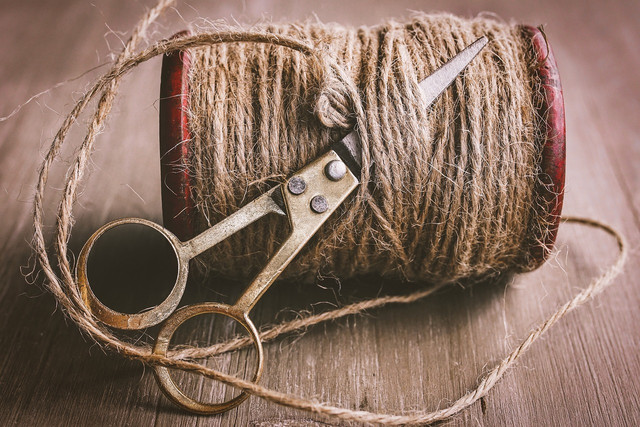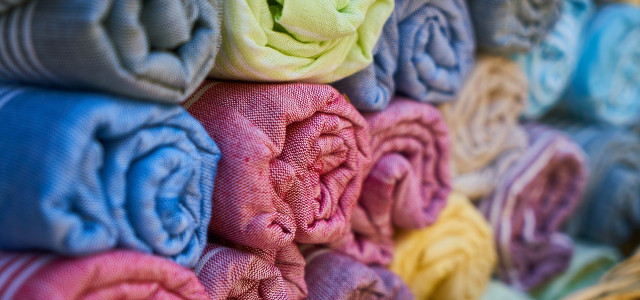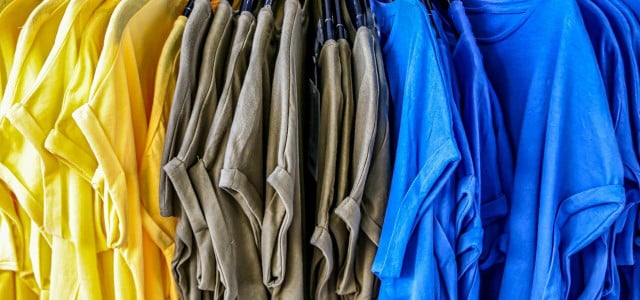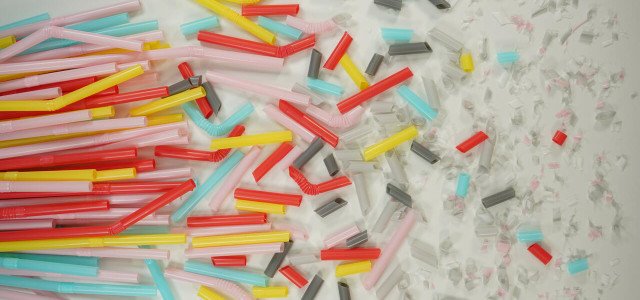The question of whether or not microfiber is good for the environment isn't straightforward. Read on to learn what microfiber is made of and how it affects the environment.
To start with — what is microfiber? This man-made material is characterized by its thin threads, often polyester or a blend of polyester and nylon. Because of the fine fibers, the resulting fabric is tightly woven and can be used to make lightweight, durable and highly absorbent items.
Splitting the fibers and weaving them back together produces microfiber, a fabric with a very high concentration of fine filaments. Due to their makeup, microfiber textiles are exceptionally receptive to liquids, making them well-suited for cleaning and drying applications. The textile industry also uses them extensively for clothing, bedding and towels.
Why Did Microfiber Become So Popular?

(Foto: CC0 / Pixabay / fotoblend)
The use of microfiber started at the tail end of the 1950s when scientists began experimenting with different spinning processes to create ultra-fine fibers. Yet, it was only in the 1990s that the microfiber craze took off commercially across Europe and the US. As microfiber eliminated many issues associated with conventional textiles, it quickly rose in popularity. It offered the following advantages over the competition:
- Reliability: Microfiber’s strength and durability come from the fact that it is woven from exceedingly tiny threads. This ensures it won’t lose its form or texture, no matter how often you wash it.
- Absorbency: Its high absorption ability makes it a perfect material in cleaning towels, rags and mop heads. It’s great for mopping up spills and messes since it can soak up a lot of water without getting weighed down.
- Lightweight: Being so light, microfiber is convenient to use and store. That means it’s frequently used for items like towels and clothes that may be packed and transported frequently.
- Soft Texture: Its smooth texture is less irritating to the skin than other materials. So, microfiber is often used for bedding, clothes and anything else that comes in close contact with skin.
- Sustainability: Since less water and energy are required for production, microfiber is often marketed as a more eco-friendly option for conscientious shoppers.
Now that you have an answer to “what is microfiber?”, we’ll look at how eco-friendly it is.
How Sustainable Is Microfiber?



(Foto: CC0 / Pixabay / Mariakray)
Overall, microfiber has eco-friendly benefits, but there are also environmental downsides.
Microfiber has a reputation for being more environmentally friendly than conventional cotton and other natural fibers. This perception typically arises because it takes less water and energy to produce. In addition, many microfiber products are made to be reused, which may reduce waste and lead to better resource management.
Although microfiber production requires less water and energy than cotton or other conventional fabrics, producing it does require fossil fuels and other precious resources. This can increase emissions of greenhouse gases and exacerbate other environmental problems.
Whether a finished product may be recycled or reused depends on the item and its manufacturing process. For example, microfiber cleaning cloths and towels may be washed and reused several times before they wear out and must be thrown away. Some microfiber goods, like clothing and bedding, wear out quickly and need to be replaced frequently. That costs you money and adds to our burgeoning landfills.
The problem of recycling microfiber is complex. Yet, businesses are actively researching and developing methods to recycle microfiber by dismantling it into its constituent pieces or finding new uses for it.
Microfiber and the Microplastic Problem



(Foto: CC0 / Pixabay / chaiyananuwatmongkolchai)
One of the most pressing issues with the widespread use of microfiber is the rising concern about their destructive connection to microplastics.
When washed, microfiber sheds plastic fibers that can clog water filters and threaten marine life. Due to their resistance to degradation, the microplastics in the ocean can last for centuries.
Because they accumulate and release contaminants over time, microplastics endanger the environment, wildlife, and human health. The contaminants they produce have been found to have carcinogenic properties — many of which are thought to cause cancer — and should be avoided whenever possible.
Overall, microfiber’s eco-friendly benefits are largely outweighed by its other, more troublesome environmental impacts.
As a consumer, you can somewhat negate its negative effect by purchasing recycled microfiber products, washing them in a washing bag to reduce shedding and getting as much use out of them as you can before throwing them away.
Eco-Friendly Fabric Alternatives



(Foto: CC0 / Pixabay / suju-foto)
Fortunately, other, greener materials exist as eco-friendly alternatives to microfiber. Here are some examples:
- Organic cotton: This is a type of cotton that is cultivated without the use of synthetic fertilizers, pesticides, or any other potentially hazardous chemicals. Because it decomposes and can be recycled, it’s a greener option than synthetic fibers like microfiber.
- Hemp: Hemp is a sustainable material cultivated without toxic fertilizers, pesticides or other synthetic chemicals. It can be used as a replacement for synthetic fibers due to its superior strength, durability, and biodegradability.
- Bamboo: The bamboo fibers may be recycled and decomposed after their use. Its antimicrobial properties make it an excellent material for towels and garments. Although, if you’re living in the US, the transportation of bamboo from Asia, Latin America or elsewhere is certainly problematic, as it adds to potential carbon emissions.
- Linen: Natural fibers from the flax plant are processed to create linen. It can last longer than cotton, decompose more efficiently, and produce less energy and water. For centuries, linen was often the go-to material for many textile industries.
So, what is microfiber? It turns out it’s not a great material to ensure the health of the planet. All things considered, there are many more eco-friendly materials available. Using natural fibers, which are biodegradable and created without harmful chemicals, is one way to lessen our impact on the natural world.
Read more:
- 15 Everyday Ways to Prevent Climate Change
- What Is Merino Wool? Does It Hurt Animals?
- What Are Sustainable Building Materials and Why Are They Important?
Do you like this post?









